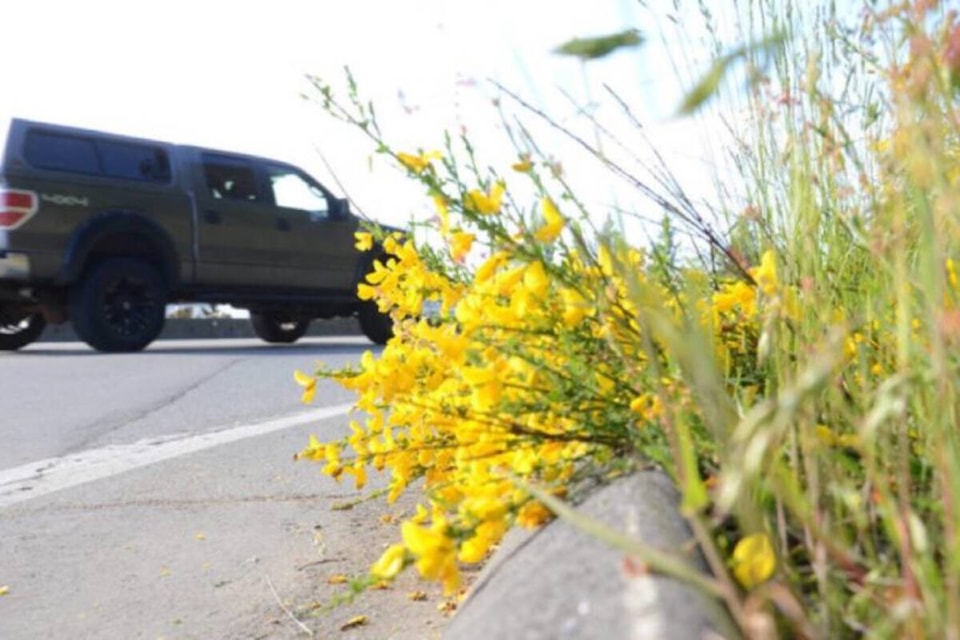Visitors can be forgiven for seeing the Scotch broom flowering along Vancouver Island roadsides, hillsides and fields and exclaiming on its colourful beauty.
People from other parts of Canada and the world don’t know what an invasive scourge it is.
As other plants around us start to poke their heads up from the ground or come into bud as spring sunshine and temperatures tempt them out of winter dormancy, the broom already has a head start.
Broom grows year-round in this climate, as the stems are photosynthetic. That’s to say nothing of the 3,500 seed pods that a mature plant can produce, with 15 to 20 seeds per pod. To make matters worse, the seeds can stay viable for up to 30 years. All it needs to take root and spread is disturbed soil.
While broom has spread to many parts of British Columbia, Vancouver Island is the epicentre of the problem, according to the Nature Conservancy of Canada and the Invasive Species Council of BC.
Little did Captain Walter Colquhoun Grant realize, when he deliberately planted the first broom in the early 1850s, that it would be such a problem all these years later, creating a fire hazard and driving out native plant species. It’s also noxious to humans and animals.
RELATED: North Cowichan asked to take action against Scotch broom
Little did Captain Walter Colquhoun Grant realize, when he deliberately planted the first broom in the early 1850s, that it would be such a problem all these years later, creating a fire hazard and driving out native plant species. It’s also noxious to humans and animals.
Fire hazard? Yes indeed, even beyond the normal peril of dried vegetation in the summer. Broom has a very high oil content, making it go up like a torch if sparked.
And it’s a blight on native species, as it has roots that hold bacteria that change the soil, not to mention its prolific growth and spread that easily out-competes things like Garry oaks and Douglas fir. You’ll notice that where it is growing, nothing else likely is. It’s not sharing with other plants.
There’s no doubt about it, the sheer scale of the problem has gotten well away from us.
Hydro line corridors and highways, where little to no serious effort has been made to curb broom, have spread the plant far and wide in huge numbers.
Just take a look at where road work has been done in recent years on the Malahat. It’s now made its home in rocky nooks and crannies that are almost impossible to get to, barring some serious mountain climbing gear.
Getting rid of it completely may be beyond our grasp at this point. But that doesn’t mean we shouldn’t try to tackle it, to at least cull it down to a more reasonable level. Property owners can all do their part by cutting it on their lands before the seeds form. And groups can adopt a roadway or field, and lobby government to address the problem on their lands.
– Cowichan Valley Citizen
